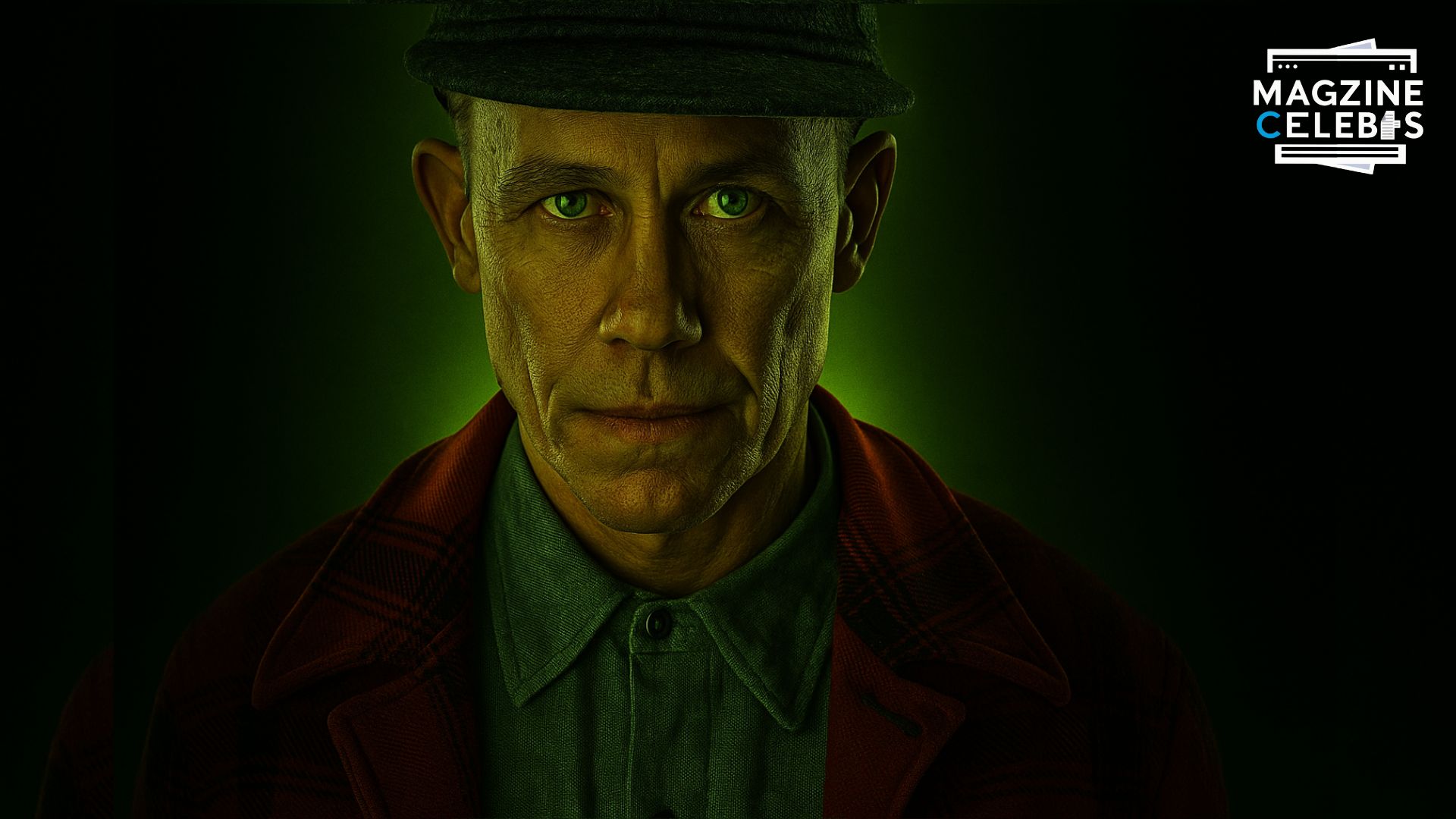Ed Gein’s shocking crimes in 1950s Wisconsin terrified America and helped shape modern horror. This deep dive covers his life, the macabre discoveries at his farmhouse, the trial, and how his story echoes through films like Psycho, The Texas Chainsaw Massacre, and The Silence of the Lambs. For more on how pop stars and actors shape culture today, see our coverage of Taylor Swift’s “Life of a Showgirl” release.Jump to:
Table of Contents
Table of Contents
Who Was Ed Gein?
Edward Theodore Gein (1906–1984) was a reclusive handyman and farm owner from Plainfield, Wisconsin. Outwardly quiet, he lived alone after the death of his mother, Augusta. In November 1957, a police search of his home turned up evidence of murders and desecrated graves—objects fashioned from human remains that stunned even veteran investigators. For a concise reference biography, see Encyclopædia Britannica’s Ed Gein entry and Biography.com’s profile. Though convicted of a relatively small number of murders compared to other infamous killers, the grotesque nature of his crimes made his name synonymous with American horror.
Early Life & Family
Born in rural Wisconsin in 1906, Gein grew up under the strict, moralizing influence of his mother. Augusta preached about sin—especially sexual sin—and isolated her sons from peers. Family life was marked by instability and alcoholism, especially from Ed’s father, George. The household’s combination of isolation, domination, and fear left deep psychological marks on Ed, shaping his adult obsessions and worldview.
Discovery of a House of Horrors
On November 16, 1957, local hardware store owner Bernice Worden disappeared. Suspicion quickly fell on Gein, who had been seen at the store. Investigators found a receipt linking him to the scene and headed to his farm. What they discovered inside became national news: human remains repurposed into household items, masks made from faces, bones and skins preserved, and evidence that Worden had been killed and mutilated on the property. For historical context on Plainfield and the case’s impact on Wisconsin, the Wisconsin Historical Society hosts archives and essays.
Confirmed Victims & Grave Robbing
Gein confessed to killing two women:
- Mary Hogan (1954): A tavern owner who vanished without a trace. Remains connected to Hogan were later found at Gein’s farm.
- Bernice Worden (1957): Her disappearance led investigators to Gein. Her body was discovered on his property.
In addition to the murders, Gein admitted to robbing graves at night. He exhumed recently buried women whose appearances reminded him of his mother. From these bodies he fashioned macabre objects, clothing, and masks—artifacts that transformed his home into a grisly workshop. For film history that connects these facts to later horror, Smithsonian Magazine’s feature on the story behind Psycho is an excellent read.
Obsession, Psychology & Motive
Gein’s crimes were less about killing for pleasure and more about an obsessive compulsion to recreate or “become” the idealized image of his mother. He reportedly attempted to make a “woman suit” from human skin. Many experts interpret this as a pathological response to grief, control, and identity confusion—an extreme manifestation of unresolved attachment and sexual suppression. The result blurred lines between murder, necrophilia, and ritualized object-making.
Key point: Unlike many serial offenders, Gein’s primary drive appeared to be identity transformation and a morbid fixation on the maternal figure—not power or sadism alone.
Arrest, Trial & Institutionalization
Following his arrest in 1957, Gein was examined by psychiatrists and deemed legally insane. He was committed to a state mental hospital rather than a traditional prison. In subsequent legal proceedings, he was found guilty of Worden’s murder but mentally ill. Gein spent the remainder of his life in psychiatric institutions and died in 1984. He was buried near the family plot, not far from the graves he had once disturbed.
From Reality to Pop Culture Icons
Gein’s lurid case reshaped American horror. His story informed three of the genre’s most influential characters:
- Norman Bates in Psycho (1960): The overbearing-mother dynamic echoes Gein’s fixation.
- Leatherface in The Texas Chainsaw Massacre (1974): The human-skin mask mirrors artifacts found in Gein’s home.
- Buffalo Bill in The Silence of the Lambs (1991): The “woman suit” motif parallels Gein’s shocking project.
For more film-world updates and nostalgia, explore our features on Gary Oldman’s return as Sirius Black and a career-spanning look at Clint Eastwood’s Hollywood legacy. Prefer the new guard? Don’t miss our in-depth Zendaya biography.
Why His Story Still Fascinates
- Sheer shock: Investigators had never seen a crime scene like Gein’s.
- Psychological puzzles: His blend of grief, control, and identity disturbance remains a case study in abnormal psychology.
- Pop-culture resonance: By inspiring multiple blockbuster films, his crimes keep echoing through new generations of fans.
Timeline & Quick Facts
- 1906: Ed Gein born in Wisconsin.
- 1940s–50s: Lives with and then near his mother; works odd jobs; grows increasingly isolated after her death.
- 1954: Disappearance of Mary Hogan.
- Nov 16, 1957: Bernice Worden disappears; police search Gein’s farm.
- 1957–1958: Gein confesses; judged legally insane; committed to a state hospital.
- 1984: Gein dies in institutional care.
FAQs
How many people did Ed Gein kill?
He confessed to two murders—Mary Hogan and Bernice Worden. However, the grave desecrations and artifacts found at his property magnified the horror of his crimes. For a different kind of legacy conversation, see Patricia Routledge’s enduring legacy.
Why is Ed Gein so infamous if his known victim count is low?
The nature of his crimes—exhumation, body-part artifacts, and a “woman suit”—was unprecedented and deeply disturbing. His case also influenced landmark horror movies. For more background on the Gein-to-Hollywood pipeline, compare Britannica’s Texas Chainsaw entry with Smithsonian’s Psycho history.
Was Ed Gein a serial killer?
He is commonly labeled one, though some criminologists categorize him as a murderer and necrophile whose primary pathology centered on grave robbing and identity fixation rather than serial predation.
What happened to Ed Gein’s house?
After the investigation, the dilapidated farmhouse was destroyed in a suspicious fire in 1958, eliminating the physical scene of many crimes.
Conclusion
Ed Gein’s story is the dark well from which modern horror still drinks. His crimes in Plainfield were not only ghastly; they were psychologically singular—an attempt to remake identity through the dead. That disturbing legacy explains why audiences keep returning to his tale, and why the phrase “inspired by true events” still carries a chill.
Keep reading: Taylor Swift: Life of a Showgirl • Gary Oldman’s Sirius Black Comeback • Clint Eastwood: Hollywood Legend • Zendaya Biography • Patricia Routledge Legacy News



